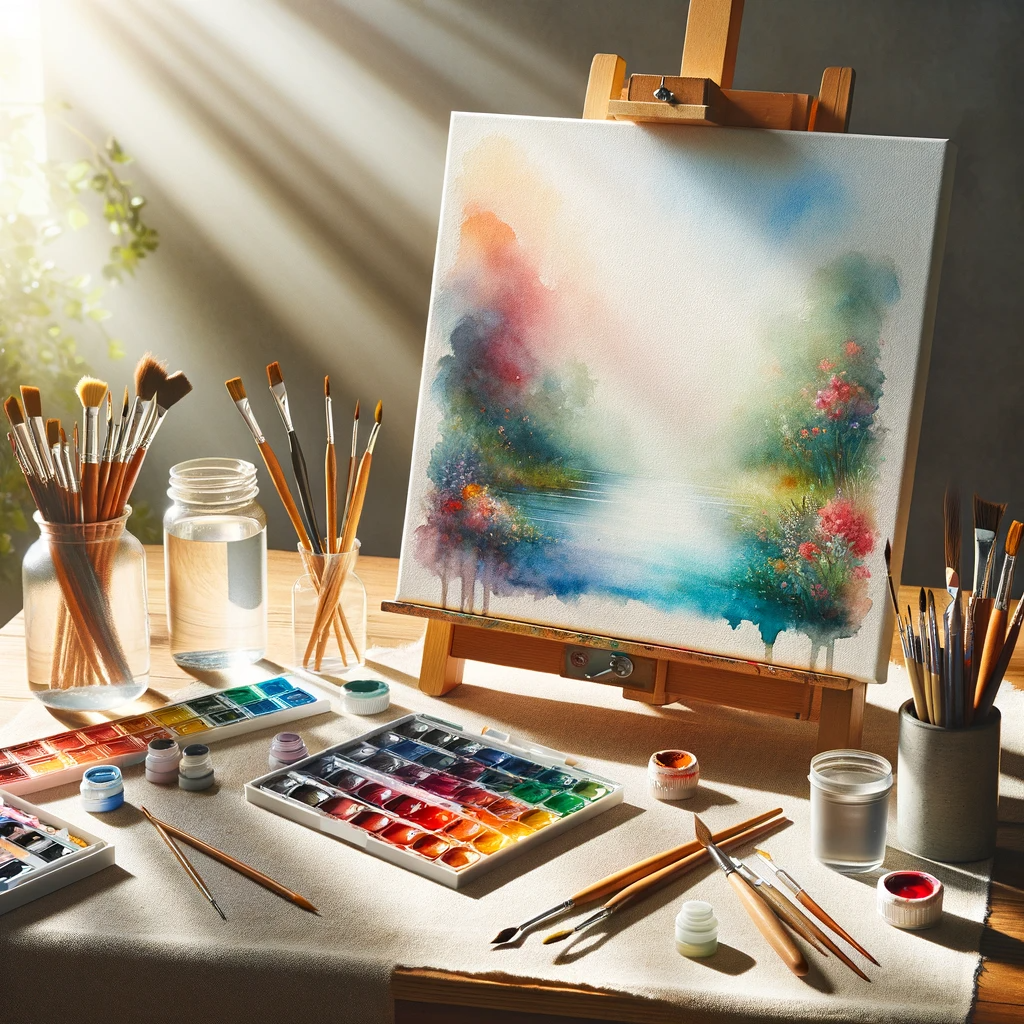Watercolor painting holds a unique place in the world of art, offering a blend of subtlety, transparency, and fluidity that other mediums seldom provide. This introductory guide is tailored for English writers and artists aspiring to explore the enchanting realm of watercolor artwork. Whether you’re a novelist seeking to illustrate your narratives or a poet desiring to paint your verses, understanding the basics of watercolor can add a vibrant layer to your creative endeavors.

Understanding Watercolor
Watercolor, known for its ethereal and luminous qualities, is a medium where pigments suspended in a water-based solution are applied to paper. The allure of watercolor lies in its translucency and the way it interacts with light, creating effects that range from bold and expressive to soft and understated.
Materials and Tools
Before you embark on your watercolor journey, familiarizing yourself with the essential materials is crucial. High-quality watercolor paper, a range of watercolor paints (tubes or pans), brushes of various sizes and shapes, a palette for mixing, water containers, and a few additional tools like pencils, erasers, and masking fluid will set the foundation for your artwork.
Basic Techniques
Watercolor painting is as much about the control of water as it is about paint. Techniques such as wet-on-wet (applying wet paint to wet paper) and wet-on-dry (painting on dry paper) form the cornerstone of watercolor art. Mastering these techniques allows for a range of effects, from smooth gradients to crisp, defined lines.
Color Mixing and Theory
Understanding color theory is essential in watercolor painting. Learning to mix colors directly on the paper or on a palette can lead to a harmonious and dynamic range of hues. Experimenting with primary, secondary, and tertiary colors will enable you to create a vibrant spectrum in your artwork.
Composition and Perspective
The composition of your watercolor piece is pivotal. It involves the arrangement of elements within your artwork, including the balance of colors, the interplay of light and shadow, and the overall harmony of the scene. Additionally, mastering perspective ensures that your paintings have a sense of depth and realism.
Experimenting with Textures
Watercolor allows for a plethora of textures that can bring your artwork to life. Techniques such as salt sprinkling, dry brushing, and sponging can add interesting and unexpected elements to your paintings, enhancing their visual appeal.
Practice Projects
Starting with simple projects can help build confidence and skill. Landscapes, still lifes, and abstract compositions are excellent starting points. Each project offers unique challenges and opportunities to apply the techniques you’ve learned.
Tips for English Writers
For writers, integrating watercolor into your work can open up new avenues of storytelling. Illustrating scenes or characters from your stories can add a visual dimension to your words, making them more engaging for your audience.
Conclusion
Watercolor painting is an art form that invites exploration and experimentation. It’s a medium that rewards patience and practice with stunning, fluid, and expressive artworks. For English writers and artists, mastering the basics of watercolor can be a fulfilling addition to your creative toolkit, allowing you to paint your narratives in as many shades as your words.
